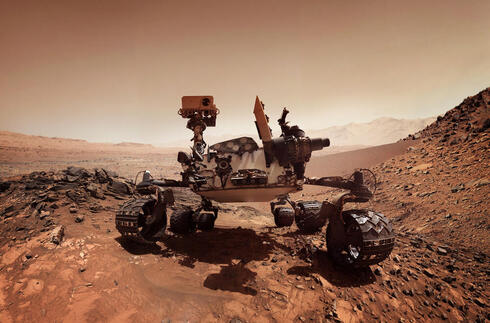
NASA’s Curiosity Mars rover captured a close-up of a rock called Terra Firme, the shape of which resembles an open book. The image was taken with a specialized camera called the Mars Hand Lens Imager (MAHLI).
The rock’s odd shape, just over an inch across, is not an unusual occurrence, as Martian rocks are often formed by water seeping through cracks, bringing with it harder minerals that help in the long-term erosion of the rock’s shape.
In this case, following sandstorms and high winds, the rock eroded over a long period of time until it assumed its present shape, with an almost perfect shape resembling an open book.
The Curiosity rover is a mobile laboratory, launched in November 2011 from Cape Canaveral in Florida, and finally landed on Mars in August 2012, on a part of Mars called the Gale Crater.
NASA launched Curiosity as part of a long-term mission to explore Mars in previously unknown ways. The lab is unmanned and operated by the Jet Propulsion Laboratory and the California Institute of Technology.
The mission aims to uncover any life that might exist on Mars, get a clearer picture regarding the climatic conditions on the Red Planet, and whether it could sustain human life or even enable humanity to build structures on certain areas of Mars that could. Preserve the human. life artificially.
This could be brooders with living quarters, not unlike what you see on research stations in the Arctic, but on a different scale.
In order to achieve the stated objectives, eight scientific objectives have been set. Equipped with innovative technology, including cameras, spectrometers and sensors, the rover has conducted experiments and expeditions to gather exploratory information to help scientists understand both the history and evolution of this unique planet.
The most notable finds to date were evidence of ancient water valleys and the presence of organic molecules, indicating that at some point in the past, microbiological life forms may have settled on Mars.




More Stories
Boeing May Not Be Able to Operate Starliner Before Space Station Is Destroyed
Prehistoric sea cow eaten by crocodile and shark, fossils say
UNC student to become youngest woman to cross space on Blue Origin